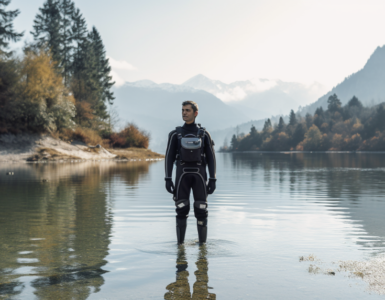Imagine the thrill of slicing through the water with ease, rhythmically propelling your body forward with a combination of power and grace. This is the essence of the breaststroke technique, a cornerstone of both recreational and competitive swimming. An understanding of this technique is indispensable to any water sports enthusiast, providing a foundation for enhanced performance and a deeper enjoyment of the sport.
The History of the Breaststroke
Did you know that the breaststroke is one of the oldest swimming techniques? Its roots trace back to ancient civilizations, where it was used for transportation and survival. Over the centuries, the technique has evolved, undergoing significant refinements and modifications. It’s fascinating to think that the breaststroke technique we use today is the result of countless generations of innovation and improvement.
Modern competitive swimming has further refined the technique, introducing variations to increase speed and minimize drag. Isn’t it amazing how a technique as old as time is still evolving and improving?
Why the Breaststroke Technique?
So, why is the breaststroke technique so popular among swimmers? Well, the answer lies in its numerous benefits. For starters, it’s a great full-body workout, targeting the arms, legs, and core. It’s also relatively easy to learn, making it accessible to swimmers of all skill levels.
Did you also know that it’s the most energy-efficient swimming stroke? The breaststroke technique allows for a slower pace and longer breaths, reducing fatigue and extending swimming duration. No wonder it’s a favorite among endurance swimmers!
Another benefit is its applicability to synchronized swimming and water polo due to its stability and control. It’s also the only stroke that allows for continuous forward-facing vision, which can be a significant advantage in many water sports. Now that’s something to dive into, don’t you think?
The Basic Principles of the Breaststroke
Let’s break down the basic principles and elements of the breaststroke. Each element holds its own importance and contributes to the overall effectiveness of the stroke. Understanding these principles is key to mastering the breaststroke.
The Kick
At the heart of a great breaststroke is the kick. The kick in breaststroke is often referred to as a ‘frog kick’ or ‘whip kick’. Why? Because you’ll be kicking out to the side, sort of like a frog, then whipping your feet back together. You start with your legs pulled up towards your body, then you push them out and back in a circular motion. Sounds complicated? It’s not really – with practice, the rhythm will feel natural. The key is to ensure your energy is directed straight behind you.
The Pull
Along with the kick, the pull is another important element in breaststroke. It’s all about the arm movement. You begin with your arms extended straight out in front of you. Then, you pull your hands towards your body, and push them out again. The trick is to keep your movements smooth and controlled. Remember, the water is your friend. Work with it, not against it. Think of your hands as paddles efficiently moving you through the water.
Common Mistakes and How to Avoid Them
In the world of swimming, the devil is often in the details. Let’s explore some common mistakes swimmers make during the breaststroke and how you can avoid them. After all, knowing what not to do is just as important as knowing what to do.
Timing Issues
Incorrect timing can greatly impact the effectiveness of your breaststroke. The key to good timing in breaststroke? It’s all about coordination. The pull and the kick must work together seamlessly. When your arms are about halfway through the pulling motion, that’s when you should start the kick. And when you’re kicking, your arms should be extending forward. Seems like a lot to remember, right? Don’t worry. With practice, this will soon become second nature. Want a quick tip? Try counting in your head: “Pull, kick, glide… pull, kick, glide…”
Advanced Techniques to Improve Your Breaststroke
So, you’ve got the basics of breaststroke down pat. You’ve mastered the kick, perfected the pull, and your timing is on point. But where do you go from here? How can you take your breaststroke to the next level? Well, there are a number of advanced techniques that can help you do just that.
These techniques are designed to refine each aspect of your stroke, making it more efficient, powerful, and smooth. They can help you swim faster, exert less energy, and reduce the risk of injury. Sounds good, right? Let’s dive in and see what these techniques are all about.
Expert Tips to Enhance Your Breaststroke Technique
- High Elbows: Keep your elbows high and close to the body during the pull phase. This helps to increase your power and reduce drag.
- Streamlined Glide: After each stroke, extend your arms and legs fully to create a streamlined glide. This helps to maintain your momentum and conserve energy.
- Powerful Kick: Make sure your kick is powerful and propulsive. The kick is the main source of propulsion in breaststroke, so make it count!
- Controlled Breathing: Only lift your head to breathe during the propulsive phase of the stroke. This helps to maintain a streamlined position and reduce drag.
- Efficient Turns: Practice your turns to make them as efficient as possible. A good turn can make a big difference in your overall speed and performance.
Tools and Equipment to Aid in Mastering the Breaststroke
Just like any other sport, swimming has its own array of tools and equipment designed to aid in training and performance. These tools can help you focus on specific aspects of your stroke, provide resistance for strength training, and even simulate the experience of swimming at faster speeds. But with so many options out there, how do you know which ones are worth investing in?
Well, that’s where we come in! We’ve compiled a table comparing some of the most popular and effective training aids for breaststroke. Let’s take a look.
| Training Aid | Features | Benefits |
|---|---|---|
| Swim Fins | Long, flexible fins worn on the feet | Increases propulsion, helps improve kick technique |
| Pull Buoy | Foam device held between the legs | Isolates the upper body, helps improve pull technique |
| Kickboard | Foam board held out in front | Isolates the lower body, helps improve kick technique |
| Swim Snorkel | Device for breathing while face is in the water | Allows focus on technique without need to turn head to breathe |
| Hand Paddles | Flat devices worn on the hands | Increases resistance, helps improve pull technique |
Maintaining and Improving Your Technique over Time
Just like any other skill, mastering the breaststroke technique requires consistent practice and dedication. But how can you ensure that you maintain and continue to improve your skill over time?
Firstly, consistency is key. Make sure to practice regularly, ideally under the guidance of a trained coach who can provide you with constructive feedback. Secondly, always be open to learning. Even the most experienced swimmers continuously seek ways to improve their technique. Remember, there’s always room for improvement!
Don’t forget to incorporate drills into your training sessions. Drills help you focus on specific aspects of your technique, allowing you to fine-tune your movements. And lastly, be patient. Improving your breaststroke technique won’t happen overnight, but with persistence and hard work, you’ll surely get there!
Final Thoughts on the Breaststroke Technique
So there we have it, a comprehensive guide to the breaststroke technique. We’ve discussed its history, its benefits, the basic principles, common mistakes, advanced techniques, and even the tools and equipment that can aid in your mastering of this skill. What’s the takeaway?
The breaststroke technique is a fundamental aspect of swimming that offers several benefits. Not only can it improve your overall fitness, but it can also open doors to competitive swimming. So why not give it a shot? Who knows, you might just discover a new passion.
Remember, mastering the breaststroke technique requires patience, practice, and a whole lot of perseverance. But with the right mindset and dedication, you’ll be swimming like a pro in no time. So, are you ready to dive in?
- Consistency is key: Regular practice is crucial in maintaining and improving your technique.
- Always be open to learning: No matter how experienced you are, there’s always room for improvement.
- Incorporate drills into your training: Drills help you focus on specific aspects of your technique.
- Patience is a virtue: Remember, improving your breaststroke technique won’t happen overnight.
- Take the plunge: The benefits of mastering the breaststroke technique are worth the effort. So why not give it a shot?




